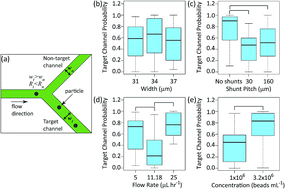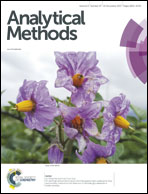Method to study particle flow bias at a channel bifurcation in a microfluidic device
Abstract
Cell and particle sorting mechanisms are integral components in many microfluidic devices for cell and chemical processing. The objective of a microfluidic particle sorter is to separate a target particle sub-population with a 100% true positive and true negative rate. Sorter performance is not perfect in practice; however, negative outcomes in a good sorter design are relatively rare and thus statistical analyses that assume a balanced measure of positive and negative outcomes are not appropriate. Here, we report an empirical method and an appropriate statistical analysis to study the efficacy of sorter designs with an imbalanced distribution of outcomes. The empirical study uses polystyrene particles as model cells and studies the effects of design variables target channel width, pressure shunt pitch, bead concentration, and fluid flow rate on the outcome of the particles – target or non-target channel. Empirical data is analyzed using a balanced random forest algorithm that accounts for rare outcomes – non-target channel outcomes – and thus our statistical model has a low false positive and false negative rate. The Gini impurity measure demonstrates that the design variables shunt pitch and fluid flow rate have the largest effect on particle outcome.



 Please wait while we load your content...
Please wait while we load your content...